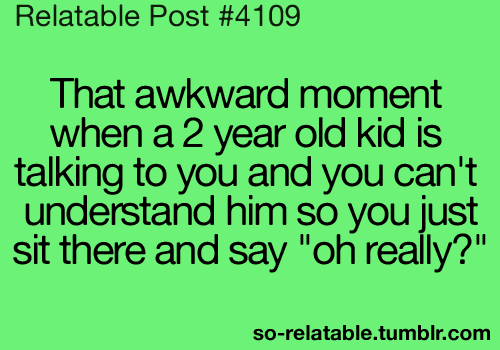Marketing on Facebook is difficult. On average, social conversion rates are 0.71 percent, while email conversions are around 3.19 percent. It’s not uncommon for marketers, both new and old school, to claim that you just can’t use Facebook to make money, or at least that it isn’t worth the effort.
Here’s the problem. People are getting fussy about their email addresses. A growing percentage of the population won’t even use email to communicate with family, let alone you, yet they’ll be fine with liking you on Facebook. It’s a looser commitment, yes, but it’s better than nothing, and if you leverage it properly, it’s a powerful way to grow.
Needless to say, most Facebook marketing strategies are lacking, and it’s never entirely obvious why. That’s why I’ve decided to share three insights your Facebook strategy is most likely missing (and feel free to give yourself a pat on the back if they aren’t).
1. Got Anything to Look At?
The number one biggest mistake marketers make when they turn to social networks for an audience is selling too much and not offering enough value to stay subscribed. I sincerely hope nobody on this site is surprised by this bit of knowledge. Hopefully, you are sick of hearing it by now.
So the obvious next step is to offer value in the form of a blog post, and link to that instead. And yes, that works quite a bit better than just trying to sell things all day and night. I mean, Search Engine Journal’s Facebook Page has about 3.5% of its audience currently engaged, while Coca Cola only has 1.2% of their audience talking about them, in large part because SEJ actively links to their blog.
But then you look at things like Shopify’s Page, and you see that they’re engaging about 8 percent of their audience. If you’re a digital marketer, you just have to wonder why. Especially when even email marketers are typically only getting a click rate of 3.6% at best.
First of all, yes, even though Shopify just released a new Point of Sale system, you don’t see them spamming their audience with it. Instead, you see them linking to their own content. But you also see things like this:

No blog link. Just a link to their Pinterest page, which is filled with inspirational quotes like this, portrayed as images with attractive design, sized perfectly for Facebook. It’s Facebook posts like these that keep 8 percent of Shopify’s Facebook audience active, despite only posting once or twice a day, and sometimes even less.
It seems to me that Shopify truly gets Facebook.
There’s a certain kind of content that does well on Facebook, and I’m not entirely sure I can describe it in words. Examples will probably do better. Want to see a page that completely and utterly kills it on Facebook? Take a look at Just Girly Things. They’re engaging about 300 percent of their audience. Wait, wait, wait, what did I just say?

And what exactly are they posting that’s getting that kind of attention?

That image got almost 3,000 shares on Facebook. Shares, not likes. (They got 93,000 of those.)
If you want to use Facebook to retain and grow your audience, it’s all about the images. If you’re posting blog links without attaching an image, you’re just not going to get the kind of engagement you need in order to reach a large portion of your audience. SEJ, Moz, Hubspot, and most content marketers and SEOs who’ve adopted Facebook are now privy to this fact.
But it’s also very clear that only certain kinds of images do the trick. When Coca-Cola reaches 1 percent of their audience and Just Girly Things reaches 300 percent of their audience, you know there’s something to it. To put this in perspective, Coca-Cola has 38 times as many Likes as Just Girly Things, but Just Girly Things actually has an engaged audience that’s seven times bigger than Coke’s.
So, why does this kind of content do so well? Its not design. Many of these images are just plain text on an ugly, bright, single color background. Its because they are:
- Relatable
- Inspiring
- Funny
- Cute
- Novel.
If you’re not getting that novelty vibe, try taking a look at Interesting Things. They’re engaging about 230 percent of their audience. They’ve got an engaged audience of about 15 million people. Here’s an example of one of their images:

I don’t know about you, but I’ve never seen anything quite like that before.
Oh, another thing. These pages post a lot, on the order of five posts an hour or so. Clearly, their audience isn’t complaining about that. They love it, and they love it because the content is so utterly interesting, relatable, funny, inspiring, cute, and fresh.
Actually, I can’t believe I just said fresh. About that…
2. This is a Repost, and I Don’t Care
The lightning storm image? It’s been on the internet since at least July 10, 2011. That quip about the 2 year old kid? It dates back to at least August of 2011.
When I say that social media content should be novel, all that really matters is that it’s novel to your audience. It doesn’t actually make much of a difference if the content was yours or not. Just about everything that gets posted on Facebook is a repost. Nobody seems to care.
This is the power of curated content. You don’t have to produce everything you post to Facebook. Social networks are for sharing, after all. Odd as it may sound, social networks actually abhor Pages that only share their own content. In most circumstances, it feels more like taking than giving, when the only purpose for your content is to offer value to your audience.
As a business, however, I would advise going the Shopify route. When you borrow a phrase, credit the original (even if it’s “unknown.”) Dress it up and give it at least some design flair. This is about building a brand identity, after all, not just about getting more shares on Facebook.
As for images, you’re in somewhat less clear legal territory. Whether or not the use of an image qualifies as “fair use” is fuzzy, even if you give credit to the original photographer or designer. If nothing else, use TinEye to find the earliest variation of the image possible, and link to it. To play it safer, either contact the original image creator, stick to creative commons images, or use a stock image service.
Bear in mind that the text on the image is often the main reason it’s so shareable. It’s not so crucial to get amazing images, unless you’re aiming for something cute or novel. If that’s the case, it’s probably going to be in your best interests to hire a photographer.
And, of course, there’s an easier way if none of this appeals to you. It’s a convenient link that says “share” beneath every post on Facebook. Perhaps you’ve heard of it? Personally, I’d be surprised if any audience complained about you filling your Timeline with images shared from other Facebook Pages, as long as they were good. Granted, the engagement won’t be quite the same, but the results will almost certainly be better than those of the average business Facebook Page, and you’ll know for sure that you’re doing it the ethical way.
In a more general sense, I consider content curation a worthwhile exercise, even if it’s just for rote practice. The more content you curate, the more you’ll develop an intuitive sense for the kind of content that performs well on Facebook. You will get better at producing your own content with similar results.
As useful as curation is, it’s not a good idea to build an entire marketing strategy around something that you don’t produce yourself. We all know what happened to the SEOs who approached marketing in that fashion.
3. Is This Stuff Turning into Sales?
Can you actually use Facebook to make money? Undoubtedly, the answer is yes. Even a recent peer-reviewed study reached that conclusion. They analyzed data from the Facebook API, the Facebook Data Science Team, and the sales data of a fashion retailer on 14,000 customers, and found that:
- Joining the Facebook page boosted sales by an average of $22, and this was explained by the subsequent Facebook activity, not by the fact that they would have spent this money anyway.
- Both positive and negative, direct and indirect interactions with other consumers boosted sales
- As for interactions with the marketer, only direct interactions boosted sales
- Direct interactions with other users transformed the products from elastic to inelastic commodities
- Indirect, positive interactions with other users had the strongest impact on sales
- Information rich content, especially when shared by other users, had a strong positive influence on sales, regardless of whether the content was positive or negative
Keep in mind that, in this study, Facebook wasn’t being used to refer people directly to sales pages. It was only being used as a location to spur conversation.
What do these results mean? If you want to use Facebook to generate sales, you only have two ways:
- Use it to drive referrals to sales pages, an email list, or other retention program
- Use it to get people talking, and the more the better
In other words, getting that Page Like is essentially meaningless. You’ve got to either keep those people engaged, or refer them somewhere else where sales can start to happen.
In either case, you really need to see that “talking about this” figure grow. Even better if what’s driving that growth is the number of comments. Still better if those comments are rich in information.
This is where it becomes important to start riding that line. It’s the simple, visual, entertaining, surprising content that gets the most reach on Facebook, but that’s not necessarily going to be relevant, and it’s not necessarily going to start an information rich conversation.
It’s for this reason that, lately, I’ve been stressing the importance of having “two audiences.” This is by no means the only possible strategy, but I suggest operating under the assumption that Facebook is for your mainstream, loosely committed audience, and that email is for your hardcore audience, perhaps supplemented by some on-site forum and comment interaction.
In short, these visual, entertaining, inspiring, bite-size pieces of content serve as a gateway drug. They expand your reach via mainstream appeal, but they link over to the hardcore content that you can use to build a solid base, full of information rich discussion.
Conclusion
Successful Facebook marketing is driven by understanding how Facebook works and why people use it. People don’t share sales pitches, and frankly most of them won’t even share a blog post, no matter how helpful they thought it was. Facebook users are looking for bite-size visual content that rapidly delivers an inspiring, funny, relatable, cute, surprising, or novel message. They’re looking for curated content. And if they’re looking for something more, it’s on your platform that they can find it. All it takes is a simple link from a shareable piece of content on Facebook.
It’s been my goal to teach everybody here at least one thing about Facebook marketing, so if you have something to contribute, I’d love to see it in the comments. Thanks so much for reading. Pass this along if it will help somebody else.




